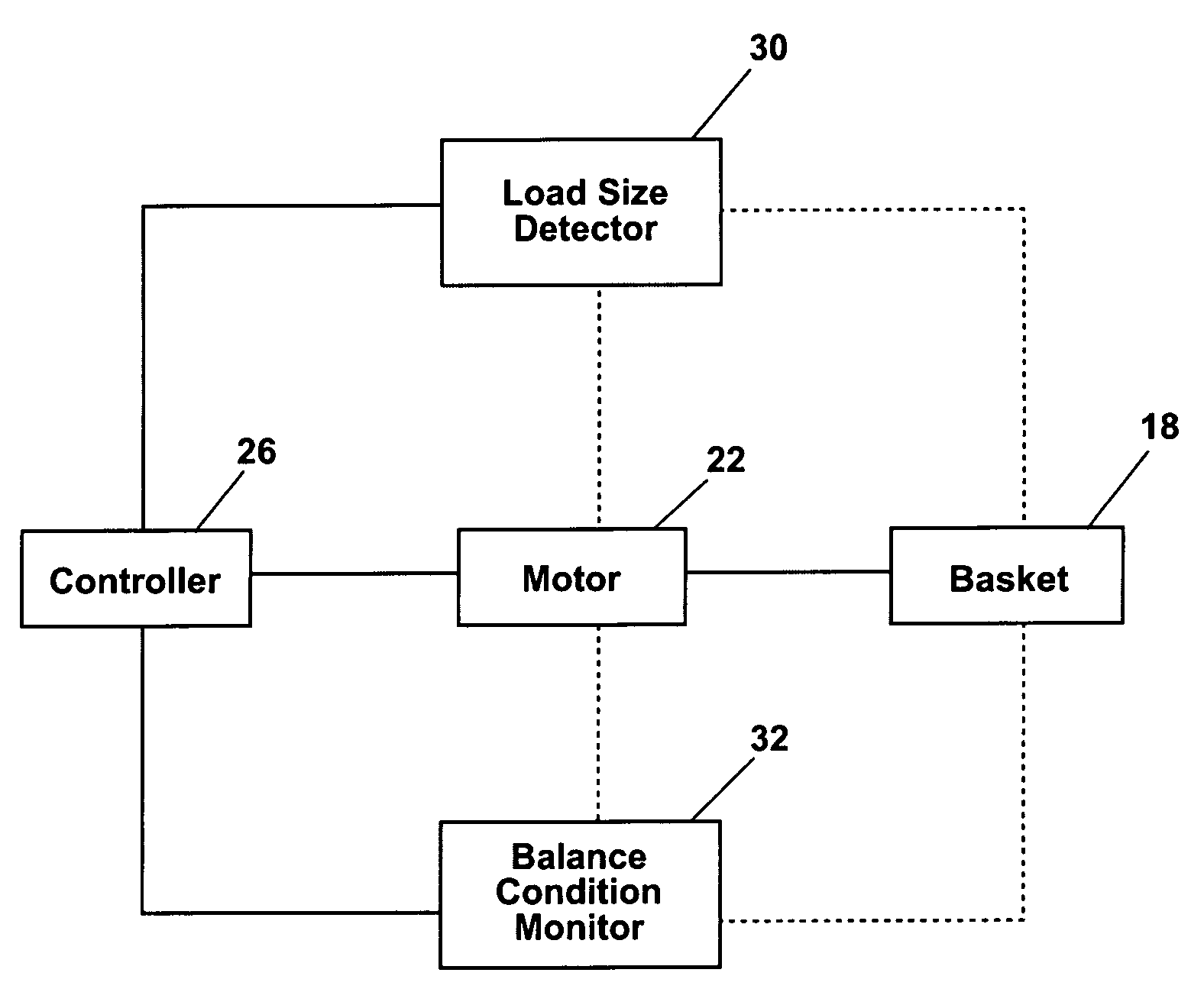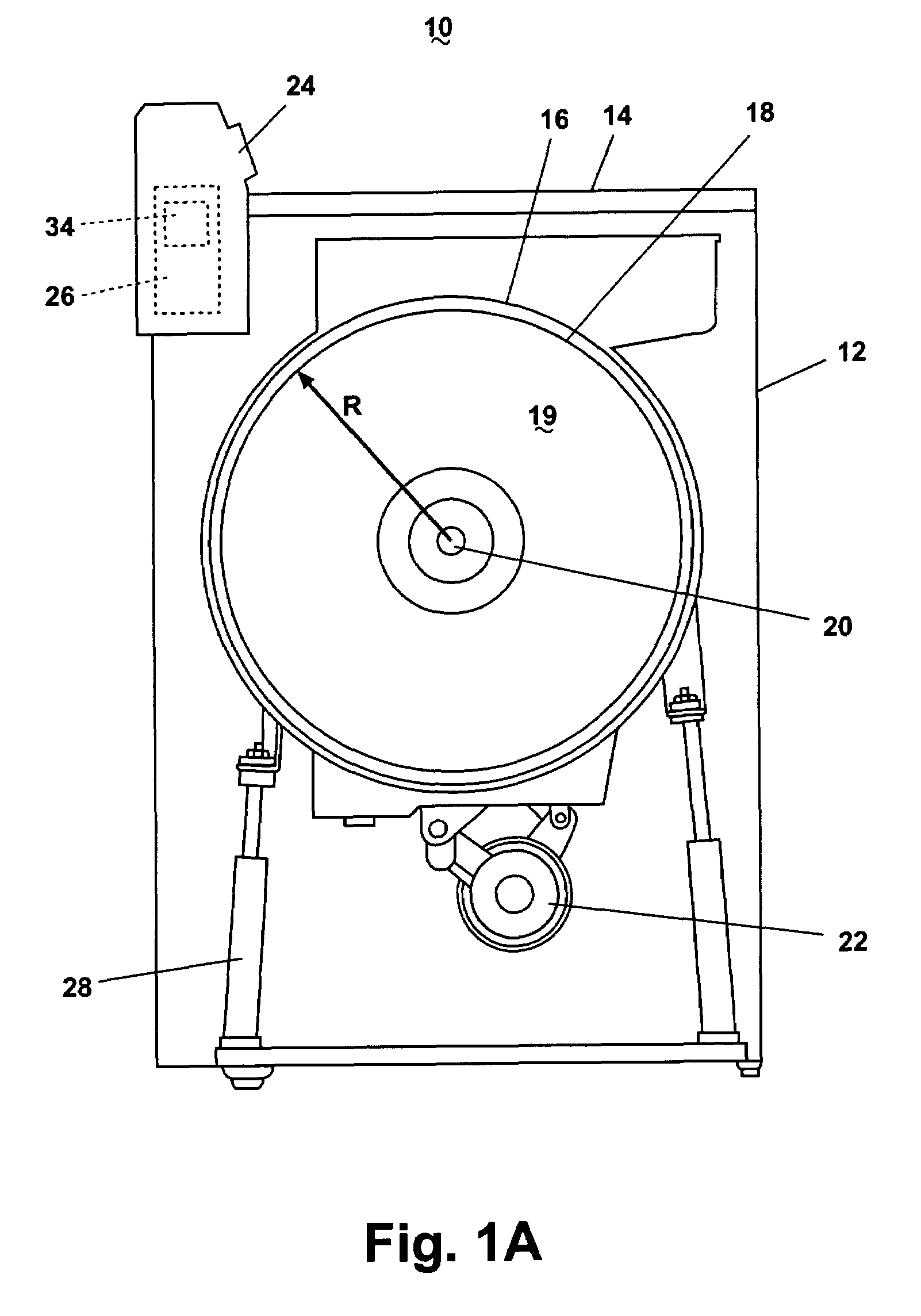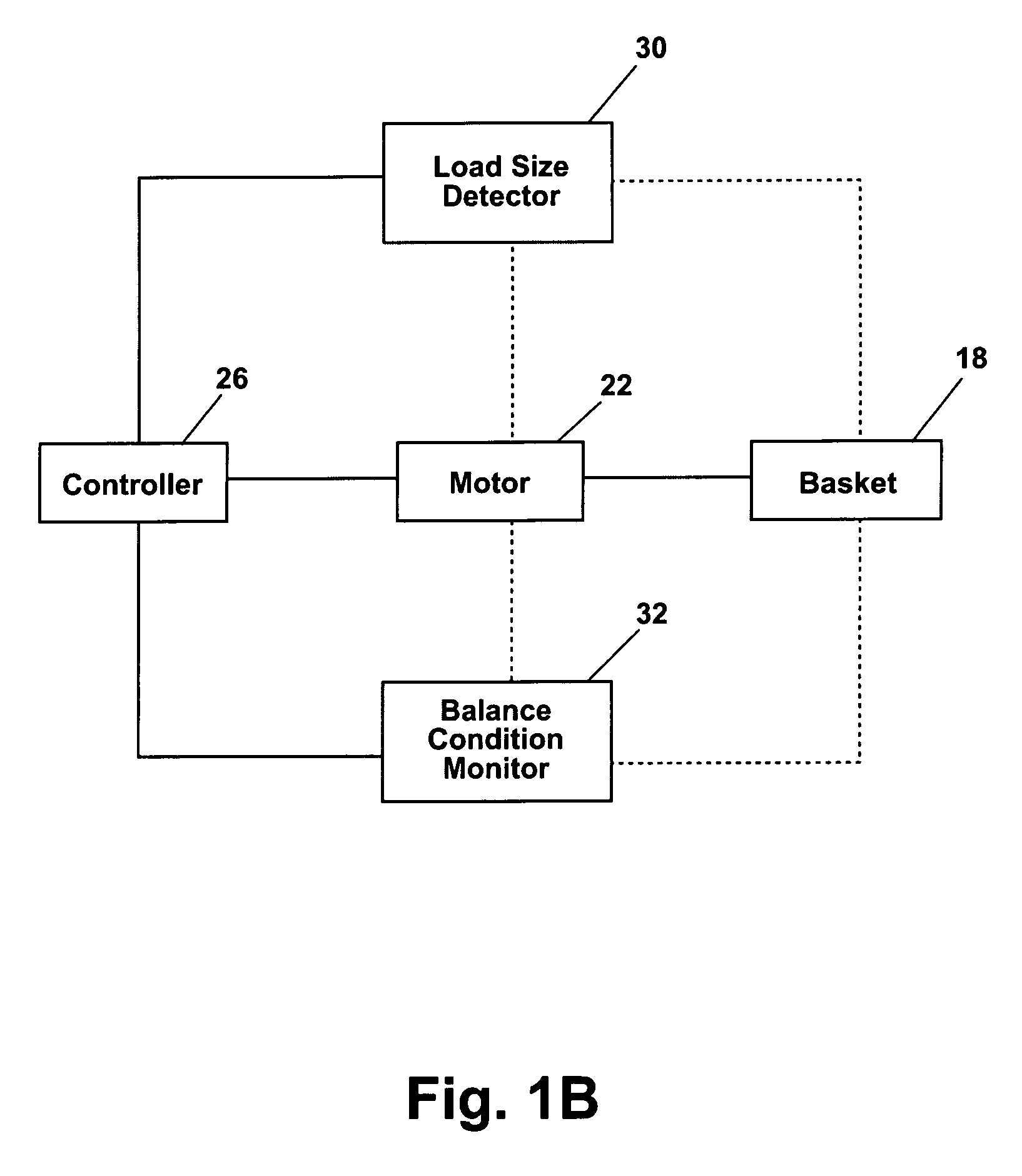Method for controlling a spin cycle in a washing machine
a technology of spinning cycle and washing machine, which is applied in the direction of washing machine with receptacle, other washing machines, paper towels, etc., can solve the problems of uneven load distribution, annoying noise, imbalanced load, etc., and achieve the effect of increasing and reducing the rotational speed of the drum
- Summary
- Abstract
- Description
- Claims
- Application Information
AI Technical Summary
Benefits of technology
Problems solved by technology
Method used
Image
Examples
Embodiment Construction
[0021]Referring now to the figures and FIGS. 1A and 1B in particular, a horizontal axis washing machine 10 for executing a method for controlling a spin cycle according to the invention comprises a housing 12 with an open top closed by a lid 14. A perforated drum or basket 18 mounted within an imperforate drum 16 in the housing 12 rotates about a horizontal axis 20, as is well known in the washing machine art. The drum 18 defines a wash chamber 19 of radius R and sized to receive a load of fabric items, such as clothing, bedding, towels, and the like. Further, the drum 18 is mounted to the housing 12 through a suspension system 28 for damping relatively minor vibrations resulting from imbalance of the load in the drum 18. Rotation of the drum 18 is accomplished by a motor 22 operated by a controller 26. The controller 26 includes a timer 34 and is operatively coupled with a user interface 24 for receiving user inputs, such as characteristics of the load, such as fabric type and soil...
PUM
 Login to View More
Login to View More Abstract
Description
Claims
Application Information
 Login to View More
Login to View More - R&D
- Intellectual Property
- Life Sciences
- Materials
- Tech Scout
- Unparalleled Data Quality
- Higher Quality Content
- 60% Fewer Hallucinations
Browse by: Latest US Patents, China's latest patents, Technical Efficacy Thesaurus, Application Domain, Technology Topic, Popular Technical Reports.
© 2025 PatSnap. All rights reserved.Legal|Privacy policy|Modern Slavery Act Transparency Statement|Sitemap|About US| Contact US: help@patsnap.com



